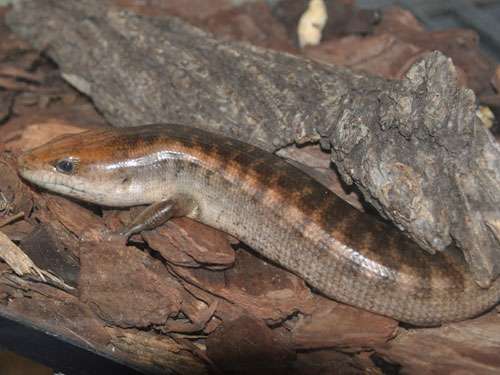
Description:
Scientific name: Caribicus warreni
Life span: 17+ years
A species of lizard belonging to the Diploglossidae family is called Caribicus warreni, also referred to as the Haitian giant galliwasp or the Hispaniolan giant galliwasp. At a weight of 68 grams, C. warreni lives up to its popular name as a huge anguid (2.4 ounces).
Native Region/Habitat
Both Haiti and the Dominican Republic have C. warreni. Hispaniolan damp woodlands with leaf litter and other forest detritus are C. warreni’s native environment.
Behavior:
The enormous Hispaniolan galliwasp is a predator that eats insects, earthworms, small animals, and other reptiles when the opportunity arises. It lives on land. They conceal themselves well and move quickly. On the island, galliwasps are frequently murdered on sight because of the false belief that they are venomous.
Care As a pet/In captivity:
They need safe hides. A 20–40 gallon terrarium is a wonderful place to start. Add around 4 inches of ground coconut coir to the tank’s bottom. Since these creatures enjoy burrowing, a nice, deep substrate is preferred. Place a shallow water dish at one end of the cage that is big enough for your galliwasp to sit in and soak. Every day, water should be replaced. Variety and hides are crucial, as well. Place a flat piece of cardboard, cork bark, or other similar object on the substrate.
Place an under-tank heat pad at the other end of the cage from the one with the water bowl. The pad will contribute to the creation of a hot spot in the enclosure even though the depth of the substrate will “muffle” the heat. To prevent your pet from wandering off, use a sturdy screen top. Then, install a heat lamp on top of the screen, covering the heat pad. Using the heat from above and below, you want to create a hotspot of around 90 degrees Fahrenheit in the region above the heat pad.

The rest of the tank’s ambient temperature ranges from 75 to 80 degrees. Install a long UV lamp or fixture that runs the length of the tank over the screen top. In the morning, all lights should be on, and at night, they should all be out. Never stop using the heating pad.
Every few days, mist the substrate with water to maintain moisture and humidity. Also, this facilitates burrowing and will aid in a proper and thorough shedding process for your galliwasp, especially for those sensitive toes. Galliwasps will consume any tiny invertebrate in the wild. Moreover, they will eat tiny vertebrates like rats and fledgling birds. They eat a variety of foods in captivity, including pinky and fuzzy mice (killed), night crawlers, insects, ground turkey, roaches, canned monitor diet, and canned dog food.
Table





